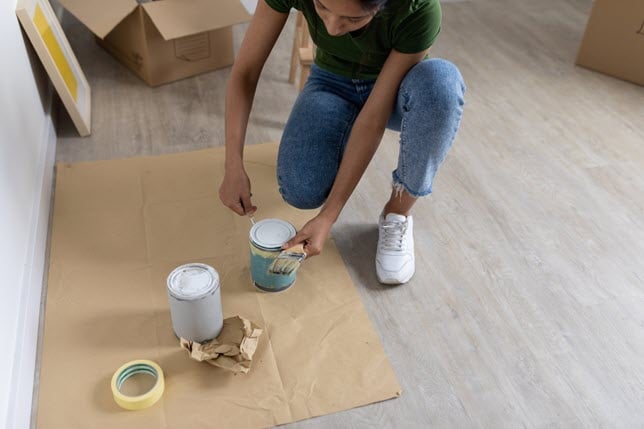Sharing is Caring!
Designing a home with future needs in mind helps families stay comfortable and organized as life’s stages change. A flexible layout reduces the need for major renovations and keeps the home functional as routines, space requirements, and lifestyles evolve.
As your family grows and evolves, so should your home. Home renovations can cost more than anticipated. So, it’s essential to consider future needs when designing a home.
Below, you’ll discover ways to accommodate your future needs and think about options that save you money, effort, and your dream home plans.
Focus on Flexible Floor Plans When Designing a Home
Homes that adapt well often rely on open layouts and multifunctional rooms.
When designing a home, consider that Large common areas can shift from play zones to study spaces and eventually to entertainment or relaxation areas.
Moreover, rooms without built-in features allow furniture arrangements to change over time. Incorporating sliding doors, movable partitions, or wide openings can also help reconfigure space without structural changes.
Below, you’ll discover key points to consider when designing a home essential to your family’s growth.
- Flexible Spaces: Design rooms (e.g., a formal dining room) to serve multiple future purposes (e.g., a home office, a study, or a first-floor bedroom).
- Adaptable Floor Plans: Use non-structural or temporary walls for easy conversion, like turning a large playroom into two smaller bedrooms later.
- Future-Proof Plumbing & Electrical: Rough-in plumbing and electrical for potential basement finishing, an attic suite, or a future kitchen/laundry room on the main floor.
- Universal Design Principles: Incorporate features such as zero-step entries, wider doorways (36 inches), and main-floor living options to ensure accessibility across all life stages.
- Zoned Living: Create distinct areas for different activities (quiet work/study, active play, private retreat) that can be closed off to control noise and improve energy efficiency.
- Maximise Storage: Build in flexible, deep storage solutions (walk-in pantries, mudrooms, organized closets) to accommodate the accumulation of things as the family expands.
- Outdoor Connections: Plan for outdoor spaces (decks, patios, yards) that can evolve from toddler play areas to teen hangouts to adult entertaining spaces.
- The “Bonus Room” Advantage: Include an unfinished or flexible bonus space (e.g., over the garage) for future expansion without major reconstruction.
Plan for Storage That Scales
Growing families accumulate belongings quickly. Designing storage solutions that expand helps keep clutter under control. Walk-in closets, built-in shelving, and pantry organizers make daily routines smoother.
Mudrooms or entry stations help manage shoes, backpacks, and seasonal items. As children grow older, spaces once used for toys can transition to hobby areas, office supplies, or workout equipment.
Create Rooms With Long-Term Function
A nursery may later become a study room or guest bedroom, so choosing neutral finishes and adaptable furniture makes transitions easier.
Bonus rooms and lofts can shift from kids’ play spaces to teen hangouts or quiet reading nooks. Home offices also benefit from flexible layouts, as many families need work-from-home options at different stages.
When Designing A Home, Incorporate Outdoor Living Options
Outdoor areas can support family needs just as much as interior rooms. Patios, decks, and yards can be designed for play, gardening, dining, or relaxation. Choosing durable materials and planning zones for shade, seating, and storage ensures these areas stay useful through many seasons of life while offering flexible spaces that adapt, encourage connection, and support changing outdoor routines.
Plan for Future Renovations
Some families eventually expand or reconfigure their homes.
Planning for potential upgrades early makes later projects easier. When designing a home, leaving space for a future bathroom, widening hallways, or pre-wiring for technology can reduce construction challenges.
Homeowners who consider larger projects, such as transforming unused levels, often consult basement remodelers to evaluate opportunities for additional living space.
The Essentials When Designing A Home
A home built with adaptability in mind grows alongside the people who live in it. Thoughtful planning creates spaces that remain functional and welcoming as your family’s routines, interests, and needs continue to evolve.
For more design tips on designing a home and creating a home that grows with your family, feel free to look over the accompanying infographic below.
We participate in the Amazon Services LLC Associates Program, Skimlinks, and other Affiliate Programs. As an Amazon Associate, I earn from qualifying purchases. Affiliate advertising programs like these allow us to earn fees by linking to affiliated sites at no cost to you.
As Amazon Associates, we earn from qualifying purchases. Please check our Disclosure Privacy Policy page. Thank you for supporting our website.
Sharing is Caring!
Disclaimer: This story is auto-aggregated by a computer program and has not been created or edited by jennertrends.
Publisher: Source link










